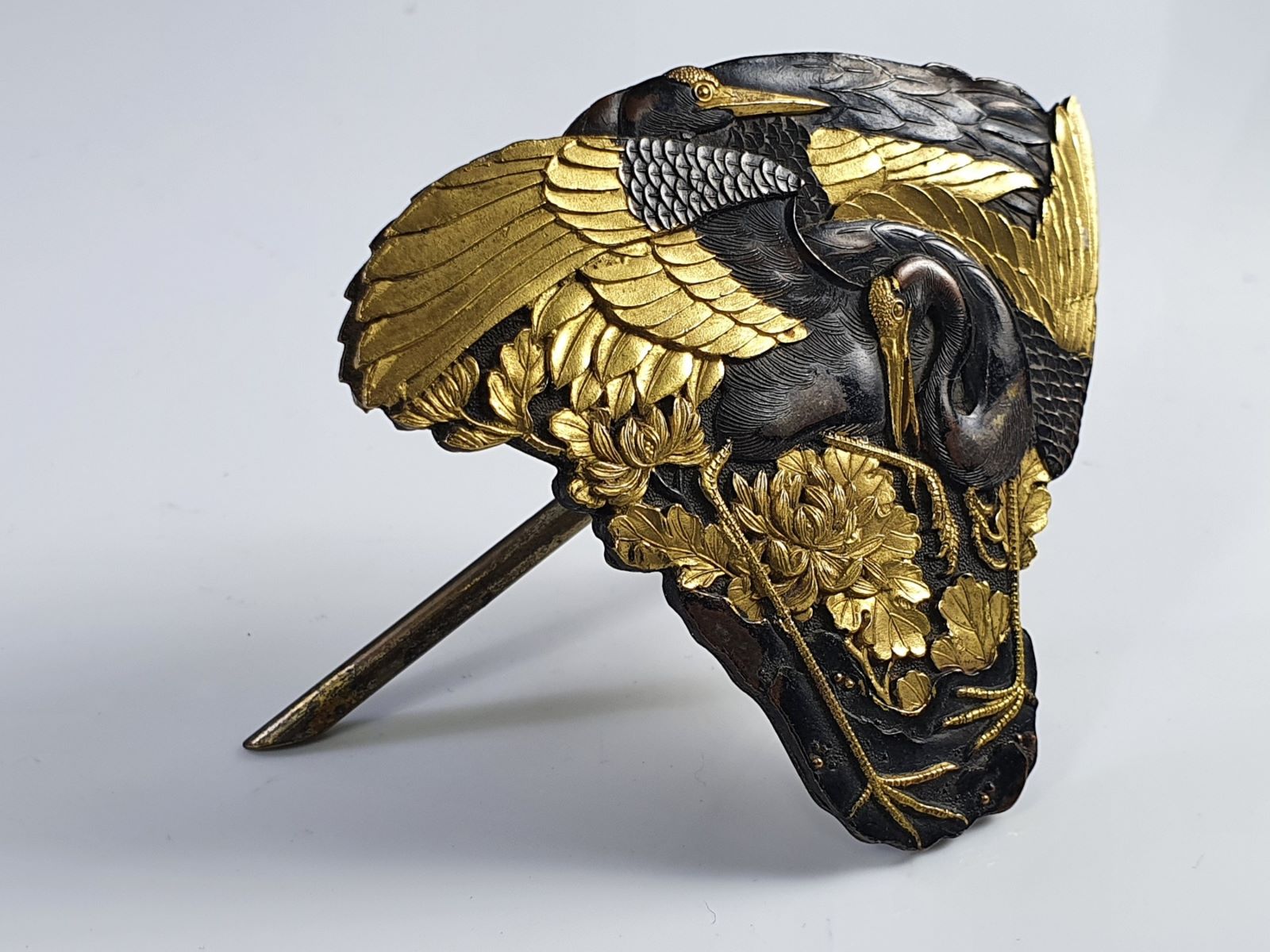
Shakudo is a fascinating Japanese alloy that combines gold and copper, creating a unique material with a rich history. Used primarily in decorative arts, this alloy has been cherished for centuries. But what makes Shakudo so special? Its distinct dark patina, achieved through a process called patination, gives it a striking appearance that has captivated artisans and collectors alike. From samurai sword fittings to intricate jewelry, Shakudo's versatility and beauty are unmatched. In this post, we'll uncover 50 intriguing facts about this remarkable alloy, shedding light on its origins, uses, and the techniques that make it so unique. Get ready to dive into the world of Shakudo and discover why it continues to enchant people around the globe.
Key Takeaways:
- Shakudo is a special Japanese alloy made of copper and gold, known for its dark blue or black color. It has been used for centuries in art, swords, jewelry, and even traditional Japanese hairpins.
- The unique properties of Shakudo make it a favorite among artisans and metalworkers, and it is used in a wide range of traditional Japanese items, from household items to ceremonial objects and even festival items.
What is Shakudo?
Shakudo is a fascinating Japanese alloy primarily composed of copper and gold. This unique material has been used for centuries in various forms of art and craftsmanship. Let's dive into some intriguing facts about Shakudo.
- Shakudo is typically made up of about 96% copper and 4% gold.
- The name "Shakudo" translates to "red copper" in Japanese.
- This alloy is known for its distinctive dark blue or black patina.
- Shakudo was first used in Japan during the Nara period (710-794 AD).
- Samurai often used Shakudo to decorate their swords and armor.
- The patina on Shakudo is achieved through a process called "niiro."
- Niiro involves boiling the alloy in a solution containing copper acetate and other chemicals.
- The dark patina is not just for aesthetics; it also provides a layer of protection.
- Shakudo is often used in combination with other metals like silver and gold.
- This alloy is highly valued for its ability to hold intricate designs.
- Shakudo is commonly used in the creation of tsuba, the handguards on Japanese swords.
- The alloy is also used in various forms of jewelry.
- Shakudo can be found in traditional Japanese hairpins known as "kanzashi."
- The alloy's unique color makes it a popular choice for inlays and overlays.
- Shakudo is often mistaken for other dark metals like bronze or iron.
- The alloy's composition can vary slightly depending on the intended use.
- Shakudo is softer than many other metals, making it easier to work with.
- Despite its softness, Shakudo is quite durable.
- The alloy's dark color can be enhanced with the addition of other metals.
- Shakudo is often used in the creation of traditional Japanese tea utensils.
- The alloy is also used in the making of Buddhist altar fittings.
- Shakudo has been used in the creation of various forms of sculpture.
- The alloy is highly prized by collectors of Japanese art.
- Shakudo is often used in the restoration of antique Japanese artifacts.
- The alloy's unique properties make it a favorite among modern jewelers.
- Shakudo can be found in various forms of modern art and design.
- The alloy is often used in the creation of custom knives.
- Shakudo is also used in the making of musical instruments.
- The alloy's dark color can be achieved through various patination techniques.
- Shakudo is often used in the creation of traditional Japanese fans.
- The alloy is also used in the making of traditional Japanese mirrors.
- Shakudo can be found in various forms of traditional Japanese furniture.
- The alloy is often used in the creation of traditional Japanese lanterns.
- Shakudo is also used in the making of traditional Japanese bells.
- The alloy's unique properties make it a favorite among metalworkers.
- Shakudo can be found in various forms of traditional Japanese clothing accessories.
- The alloy is often used in the creation of traditional Japanese writing instruments.
- Shakudo is also used in the making of traditional Japanese musical instruments.
- The alloy's dark color can be achieved through various chemical treatments.
- Shakudo is often used in the creation of traditional Japanese toys.
- The alloy is also used in the making of traditional Japanese games.
- Shakudo can be found in various forms of traditional Japanese household items.
- The alloy is often used in the creation of traditional Japanese religious items.
- Shakudo is also used in the making of traditional Japanese ceremonial items.
- The alloy's unique properties make it a favorite among artisans.
- Shakudo can be found in various forms of traditional Japanese decorative items.
- The alloy is often used in the creation of traditional Japanese architectural elements.
- Shakudo is also used in the making of traditional Japanese garden ornaments.
- The alloy's dark color can be achieved through various heat treatments.
- Shakudo is often used in the creation of traditional Japanese festival items.
Shakudo's Timeless Allure
Shakudo's rich history and unique properties make it a fascinating subject. This alloy, a blend of gold and copper, has been cherished in Japan for centuries. Its deep, dark patina, achieved through a special process called niiro, sets it apart from other metals. Artisans have used shakudo to create intricate samurai sword fittings, jewelry, and other decorative items.
Understanding shakudo's cultural significance and the meticulous craftsmanship involved in its creation adds depth to our appreciation of this art form. Whether you're a history buff, an art lover, or just curious, shakudo offers a glimpse into a world where tradition and artistry intertwine.
Next time you see a piece of shakudo, you'll know it's more than just a beautiful object. It's a testament to the skill and dedication of the artisans who crafted it, and a piece of history that continues to captivate us.
Frequently Asked Questions
Was this page helpful?
Our commitment to delivering trustworthy and engaging content is at the heart of what we do. Each fact on our site is contributed by real users like you, bringing a wealth of diverse insights and information. To ensure the highest standards of accuracy and reliability, our dedicated editors meticulously review each submission. This process guarantees that the facts we share are not only fascinating but also credible. Trust in our commitment to quality and authenticity as you explore and learn with us.


